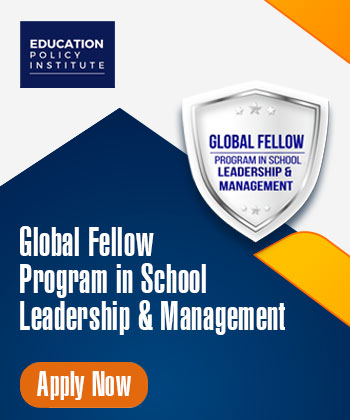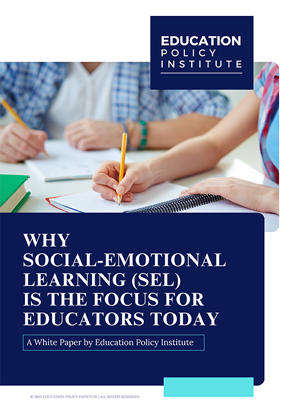In a rapidly changing job landscape, students are increasingly drawn to learning experiences that connect classroom knowledge to real-world careers. Career-Connected Learning offers a practical solution, equipping students with hands-on opportunities that bridge academic knowledge with essential workplace skills. Students are eager for more career-focused experiences that align with their unique interests, helping them gain insights into various professions and build critical soft skills. Furthermore, having mentors in these programs has shown to significantly enhance students' engagement and confidence, providing them with guidance as they navigate potential career paths.
Despite its advantages, access to career-connected learning remains limited, particularly for students from underserved backgrounds. Research indicates that many high school students still lack exposure to careers that interest them, leaving them underprepared for workforce expectations. Broadening access to these experiences through partnerships with community organizations and expanding mentorship networks could help close this gap. By embedding diverse career-oriented activities into education, schools can empower students to make informed choices, equipping them with the skills, networks, and confidence they need to transition successfully from school to career in an ever-evolving job market.
Understanding Career-Connected Education
Career-connected learning (CCL) emphasizes combining academic knowledge with actual skills to prepare students for the modern workforce. This approach equips students not only with career-specific competencies but also broader problem-solving and critical-thinking abilities, creating a bridge between classroom learning and practical work environments. CCL initiatives include internships, mentorships, industry projects, and apprenticeships, providing exposure to diverse careers and enabling students to build professional networks and explore areas of interest.
Research highlights that when students are engaged in career-related experiences, they gain a clearer understanding of potential career paths and required skills. Schools that partner with industry offer pathways that align with high-demand fields, promoting inclusivity and access to careers traditionally underrepresented. By integrating these opportunities, career-integrated education nurtures students’ ambitions and helps them envision viable futures, better aligning education with evolving job market needs.
The Benefits of Career-Connected Learning for Today’s Students
Career-connected learning introduces an engaging, experiential approach to education that aligns students' studies with real-world job skills, effectively bridging academic theories with career applications. With a strong focus on preparing students for today's evolving workforce, career-connected learning opens up pathways for students to explore potential careers and cultivate valuable insights into workplace expectations. This education model also addresses employers' needs for job-ready graduates, reducing the training gap while empowering students with a clearer sense of purpose and direction in their professional lives.
Career-connected learning also promotes diverse educational pathways beyond the traditional four-year college track, recognizing that students have unique needs and aspirations. This model provides options for students interested in technical careers or direct entry into the workforce, ensuring they receive tailored support, from skill development to trauma-informed care and professional mentorship. Ultimately, career-connected learning empowers students to make informed career decisions, view their passions as potential careers, and build a solid foundation for future success.
Why Do Students Prefer Career-Connected Courses?
Students increasingly favor career-connected courses due to their practical focus and alignment with everyday demands. Traditional academic courses often feel detached from actual career requirements, which can result in disengagement, especially among those who feel uncertain about their future paths. In contrast, career-connected courses integrate practical experiences and realistic contexts, making learning more engaging and directly applicable. By linking academic knowledge to career exploration and workplace skills, these programs empower students with a sense of purpose, allowing them to see the value of their studies in concrete terms, such as through internships, project-based learning, and mentorships with industry professionals.
This approach also addresses a critical gap in the workforce pipeline, as employers increasingly seek graduates with job-ready skills but are often reluctant to invest in training from scratch. Career-connected learning meets both educational and workforce needs by preparing students with relevant skills, helping employers reduce training costs, and creating a smoother transition from school to career. Research shows that students engaged in career pathways are more likely to complete high school and pursue further education or certifications.
Additionally, career-connected learning offers varied pathways that cater to different interests and aptitudes, moving away from the traditional “one-size-fits-all” model of education. This variety allows students to explore options that best suit their skills and future ambitions, giving them autonomy over their career choices. Programs like career academies and pathways integrated within high schools have demonstrated positive outcomes, including higher graduation rates and increased job market readiness.
The Growing Demand for Career-Related Learning Opportunities
The growing demand for career-related learning opportunities is driven by evolving labor market requirements and a rising focus on practical skills that prepare students for in-demand jobs. Many sectors now require specialized knowledge and technical skills, creating a strong push toward Career and Technical Education (CTE) programs and similar initiatives. These programs blend traditional academics with experiencial learning, giving students a pathway to industry credentials and employment directly out of high school or postsecondary education.
Several factors fuel this demand. According to the U.S. Department of Education, by 2027, nearly 70% of jobs will likely require some form of education beyond high school, highlighting the need for programs that bridge high school education with job-specific skills. Work-based learning, like internships and apprenticeships, offers students real-world experience, linking classroom education to actual career settings. Many CTE initiatives have adapted to support diverse groups, such as English language learners, through enhanced outreach and resources, which further increases participation in these programs.
Additionally, dual enrollment programs that allow students to earn both high school and college credits have shown success in boosting college enrollment and completion rates. Students gain exposure to college-level material and career paths while still in high school, providing a clearer transition into postsecondary education and skilled trades. These structured pathways emphasize collaboration between educational institutions and industry, ensuring that students are prepared for high-growth fields with relevant credentials and experience upon graduation.
Challenges in Accessing Career-connected Education for All Students

1. Financial Barriers
- Career and Technical Education (CTE) programs require significant investment in resources like equipment, industry-specific tools, and support services.
- Funding limitations make it difficult to provide all students with access to these career-integrated educational opportunities.
2. Socioeconomic Inequities
- Students from low-income backgrounds often face barriers to work-based learning experiences, such as internships, which are more accessible to students from higher-income families.
- Many low-income students cannot afford unpaid internships, especially when these involve extra costs like travel or living expenses in urban areas.
- Financial constraints can prevent students from participating in these opportunities, potentially affecting their career readiness and job prospects.
3. Limited Paid Opportunities
- Some programs aim to offer stipends or paid internships to support low-income students, but scaling these initiatives to meet demand remains a significant challenge.
4. Perception and Accessibility Issues
- There is a disparity in how accessible career-oriented paths are for students from diverse backgrounds, including minority groups and students with disabilities.
- Structural barriers, biases, and a lack of targeted support make it more difficult for underrepresented students to participate in CTE programs or internships.
5. Need for Diversity and Inclusion Efforts
- While initiatives to promote diversity in career-connected education are increasing, challenges persist in recruiting students from underrepresented groups.
- Inclusive policies and targeted recruitment efforts aim to address these gaps, but systemic biases still limit equitable access.
6. Shortage of Qualified Instructors
- CTE programs require instructors with industry experience, but attracting qualified professionals can be difficult because salaries in the education sector are often lower than in industry positions.
These challenges highlight the need for strategic solutions, such as increased funding, inclusive policies, and partnerships with industry to ensure that career-connected learning is accessible to all students.
The Future of Career-Integrated Education in Schools and Beyond
The future of career-integrated education is becoming more adaptable and focused on everyday applicable skills, aligning academic learning with industry needs. Schools are increasingly partnering with businesses to design curricula that offer students experiences through internships, job shadowing, and project-based learning. Emerging trends, such as virtual internships and simulations, allow students in rural and underserved areas to access career experiences remotely, broadening the reach of career-integrated education and enhancing equitable opportunities.
Additionally, there is a growing emphasis on equipping students with transferable skills like critical thinking, adaptability, and collaboration to prepare them for a dynamic workforce. Schools are beginning to offer modular certifications and micro-credentialing, enabling students to upskill as industries evolve. This approach caters to lifelong learning, which is crucial in today’s rapidly changing job market, and ensures students remain adaptable and relevant over time. As career-integrated education becomes more tailored and accessible, schools are likely to deepen partnerships with industry leaders, continuously updating programs to reflect evolving career demands.
Overall, career-integrated education is shaping up to be a central part of mainstream education, moving beyond vocational training and becoming essential in preparing students for sustainable, fulfilling careers. By focusing on practical skills and flexible pathways, this approach not only enhances student career readiness but also helps to bridge gaps in access and equity, providing all students with the tools needed to succeed in the modern workforce.
Conclusion
Career-connected learning is transformative which bridges the gap between classroom learning and the skills demanded by the modern workforce. By providing students with practical experiences and industry exposure, this model not only enhances their career readiness but also empowers them to make informed decisions about their futures. While challenges such as access and equity remain, the future of education is leaning toward greater collaboration between schools and industries. By expanding these opportunities, we can ensure that all students are prepared for a successful transition into the workforce, equipped with the knowledge and experience to thrive.
Latest
Trends blogs
- The Next Phase of STEM Education: The Role of Artificial Intelligence in Classroom Curricula
- Education Technology in 2026: Trends Driving the Next Wave of Learning
- Aligning Education with Employability: The Rise of Skill-Centered Learning
- Education and Industry Alignment: Rethinking Skill-Based Curriculum
Focus blogs
- Research-Driven Education: Strengthening Strategies, Policies, and Classroom Practice
- Professional Certifications for Career Growth: What Students and Young Professionals Need to Know
- Building a High-Impact Center of Excellence: What You Need to Know
- Beyond Graduation: The Importance of Lifelong Learning in Higher Education





